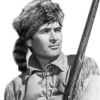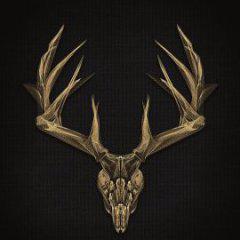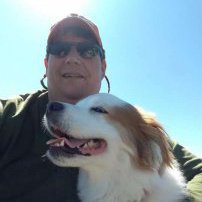-
Posts
471 -
Joined
-
Last visited
-
Days Won
3
adkbuck last won the day on February 26 2015
adkbuck had the most liked content!
Profile Information
-
Gender
Male
-
Location
CNY & ADK
-
Interests
Hunting, Fishing, Maple sugaring, Fishing Tackle Making and Repair, Fly Tying, Reloading, Archery, Cooking, Amateur Taxidermy, Franciscan Spirituality, Engineering, Naval History and Gardening
Extra Info
-
Hunting Location
ADK / CNY
-
Hunting Gun
Rem 7600 270 Win / Rem 700 CDL 35 Whelen/ Rem 870 12 Ga.
-
Bow
PSE Vengeance
Recent Profile Visitors
7283 profile views
adkbuck's Achievements
-
Making it look easy! Congratulations!
-
Well Done, great bird, narrative and photos. Congrats to you and your Dad!
-
Congratulations. Great looking bird!
-
Congratulations on a great bird! Displaying him on the stump was a brilliant Idea, really like it!
-
I would stick with D. Not only for the bird's sake but for the mental well being of hunters. A full day hunting gobblers would take a heavy mental and physical toll on us guys over 40 and could lead to strained domestic relationships as well as job performance issues.
-
Congratulations, Job well done!
-
Thanks everyone. Vince, You are welcome. When I hunt the woods as opposed to a field I don't really have a set-up. I just have my camo suit and head net, my gun, my call(s) and my seat cushion (if I think of it). I never use decoys in the woods anymore because the gobbler will often have a hard time seeing them and I like be able to move without worrying about moving decoys. I try to move on birds because the gobbler naturally thinks the hen should come to him. So I try to close the distance whenever I can. Even closing the distance a little bit will help get the older birds moving toward you because they know the hen is acting in a natural manner and they get more excited. Admittedly some gobblers and most jakes will often come in without it but pressured birds and older birds may need the additional reassurance. I think it is good to give the gobbler the perception that the hen has moved toward him, at least to some degree. If you are hunting public land or private land and a gobbler is on property that you don't have permission to hunt, moving as much as you can in the gobbler's direction will help. Also I never try to get closer than 100 (brush) or 200 yards (open woods) to avoid the possibility of spooking the gobbler. I will answer his gobbles with hen calls, the yelp and the purr with a cluck are my best producers. A hen will often repeatedly cluck and purr when she is trying to find another bird, be it another hen or a gobbler. When I think I am close to 100 yards (heavy cover) or 200 yards (open woods) of a gobbler and he has heard me call, I stay put. I never call again once I think he is within 100 yards. He will know your approximate position. He will most likely either quickly come into range or will drift off for whatever reason. He will normally come in with his neck and head very extended looking for that hen. I get my gun up and ready when he passes behind a tree or brush and take him when he gets to an opening within range. I
-
If I have time I like to pluck the bird because my family and I like the flavor of a bird roasted with the skin on. It gives it a rich flavor that's hard to beat. Usually you can dry pluck the bird if you can get to it within an couple of hours after the kill. I cut the wings off at the first joint since there isn't much meat on them and this makes the plucking much easier. I dress the bird right after plucking then wash him out real good with cold water. I like to let the carcass set in a bucket cold water for 15 minutes to cool him down good. To cook the bird I use the Alton Brown method: https://www.youtube.com/watch?v=eaKOLGIcMGE If I don't have time for plucking I take the breast and the thighs and cook them separately, I especially like marinating and grilling them, although making turkey tenders is great also! The roast turkey method using Alton Browns method comes out tender and juicy every time. It enables the dark meat to cook to a higher temperature (which it needs) without over cooking and drying out the breast meat. The method uses a aluminum foil breast covering to avoid overcooking the breast meat after the bird is browned. I throw some cut up onion and apple inside the body cavity and close up the front and back openings before roasting.
-
Thanks guys. Grow, it was a raggedly broken stub of hair, I'd say the fleshy base was 3/4 inch maybe 7/8 inch in diameter where the beard attached to the skin. The hair bristles were a bit thicker in diameter, about an inch. The length of the remaining hair bristles was less than half of an inch. The area looked like a very hairy wart after the bird was plucked. Wish I had taken a photo. I just figured it was the result of icing up and the weight of it caused it to fall off. I must say that I don't know anything about beard rot. I had not even heard of it before. If it is related to lack of nutrition it may have been the cause. When I think about how long they had to remain roosted before we got some crust on the snow I am amazed that they could make it through last winter. The wild turkey is a really amazing bird. Grizz, You may be right since the spurs had a pretty good curve to them.
-
Killed 0940 May 4, 2015 Detailed Narrative: I hunted Saturday Morning but couldn’t raise a gobble. It seemed pretty dead. I figured the boys where pretty much on hens. I was able to get most of the morning off on Monday May 4 so decided to give it another try. Yesterday (Monday) I Initially was set up on the edge of a field again with couple of hen decoys but hadn't heard a gobble or any hen talk from 0530 - 0830. I figured it was too warm and sunny for the field hunt so I decided to forget the field and decoy thing and headed into the woods. I set up near a small pond and blind called for a while. At 0900 I heard a few clucks to my east, shifted position moving 50 yards to the East to get a better view hoping a for a hen with gobbler in-tow. Threw out a few more clucks but no response. At about 0915 sent out a few clucks and purrs followed by some yelps. Heard a gobble far away to the Northwest and a few clucks and putts much closer. Moved 75 yards to the Northwest. Heard some "where are you" putts from the hen and responded in kind. At 0930 heard two gobblers, one estimated at about a 500-600 yards to the Northwest and one closer, about 300 yards to Southwest. I decided to close another 100 yards on the Southwest bird. After getting set up the base of a maple I sent out a few purrs and clucks and was immediately answered by the hen again to the west and the gobbler (now about 200 yards) to the south. At 0935 I sent out a series of purrs and few yelps. A couple of minutes later saw something 100 yards to the south. At 0940 saw the body and a glowing bright red head of a gobbler 60 yards to my Southwest moving Northward. The gobbler would have a CPA of 30 yards and I fired when he reached CPA. He went right down. He was a 19.5 # two-year-old, with one inch spurs. The beard had been almost completely broken off from the snow and ice. After plucking and dressing him for roasting he seemed in very good condition considering the winter and deep fluffy snow we had from late January to mid March. He had an appreciable sponge fat deposit but I imagine he would have weighed in a bit more after a normal winter. I was grateful to take him!
-
Wow. Beautiful mule deer and antelope ...and sure 'nuff big! Those are some handsome looking mounts! Nice job by the hunter and taxidermist!! Did you get them both on the same trip or two different trips?
-
Certainly not off topic Jennifer. Thanks for the additional historical range map. The presence of a huge and reliable mast resource certainly has a huge impact on the winter survivability of a species. A large cervid like the elk would certainly be in much better condition to survive. It all makes sense. I was impressed by the introductory scene of the 1992 movie "Last of the Mohegans" when Hawkeye cocks and fires his flintlock, his ball intercepting a prime eastern bull elk in mid flight. Chingachgook then takes out his knife and approaches the fallen bull reverently saying " We are sorry to kill you brother, we respect you strength and speed." (May not be the exact script) A scene like that is hard to forget. I found it interesting that the film considered the historical presence of the elk in the eastern forest environment.
-
Jennifer thanks for the SUNY ESF link on the chestnut. Fascinating! I was unaware the one out of 4 trees in the Eastern US was a chestnut. I had the impression that most of NYS state historically had chestnuts but that didn't seem true due the one chart he put up shows the historical Pre-blight range of the American Chestnut: Looking at this it seems that large portions of NYS were outside the range of the chestnut. Also according to that chart much of the historical eastern elk range apparently did not have chestnuts. Just an observation. One of the things I learned from the presentation was that chestnuts are stable annual producers of nuts. Imagine if the Adirondacks had that food source available for wildlife. Deer and Bear would probably go into winter in much better shape than they do now. In portions of the ADK's I hunted last fall I don't think I found a single beechnut. Compared to the stable nut bearing of healthy chestnut trees, beechnut trees are very unstable from year to year. So from what I could see the deer in the Central and North Central ADK's went into this winter without the benefit of a good beechnut crop. I'm not a biologist but given the nasty winter they could have used the extra fat from a good nut crop. Again, just an observation. Doc, I don't think anyone is advocating the reintroduction of elk (especially me) into NYS at the time. The post was in response to a previous poster inquiring about elk moving from PA to NY and was geared to explaining what the history of elk was in NYS and what feasibility studies have been conducted regarding elk in NYS. It was for information only.
-
Here are a couple of Church signs of interest:





